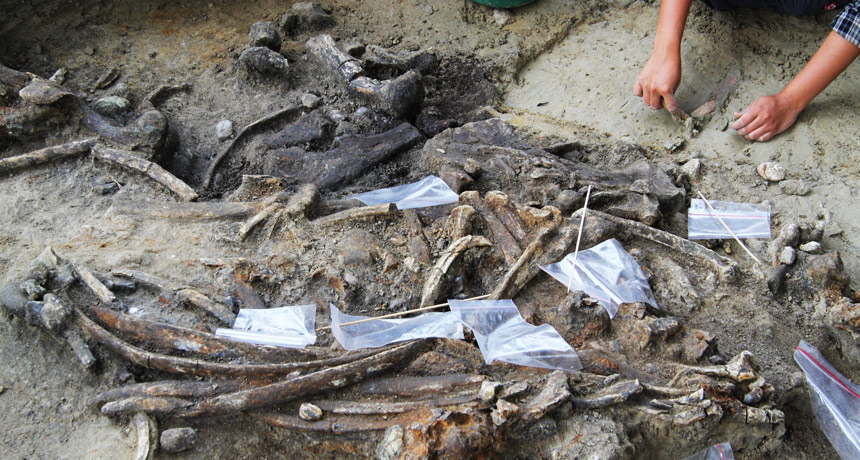Butchered rhino bones place hominids in the Philippines 700,000 years ago

Stone tools strewn among rhinoceros bones indicate that hominids had reached the Philippines by around 709,000 years ago, scientists report online May 2 in Nature.
Stone Age Homo species who crossed the ocean from mainland Asia to the Philippines — possibly aboard uprooted trees or some kind of watercraft — may also have moved to islands farther south, the team proposes. Evidence of ancient hominids has been found on some Indonesian islands, including individuals’ fossil remains on Flores (SN: 7/9/16, p. 6) and ancient stone tools on Sulawesi (SN: 2/6/16, p. 7).
But researchers hadn’t found old enough evidence of hominids in the Philippines to suggest such a journey — until now. At an excavation site in the landlocked northern region of Kalinga in the Philippines, more than 400 animal bones have been discovered, including much of a rhino skeleton, and 57 stone artifacts. Cuts and pounding marks on 13 of the rhino bones resulted from meat and marrow removal, say bioarchaeologist Thomas Ingicco of the National Museum of Natural History in Paris and colleagues. Other fossils came from brown deer, monitor lizards, freshwater turtles and extinct, elephant-like creatures called stegodons.
Measures of the decay and accumulation of radioactive elements in Kalinga sediment and an excavated rhino tooth suggest the fossils are roughly 709,000 years old, give or take about 68,000 years.
Previously, the earliest evidence of hominids in the Philippines came from a roughly 66,700-year-old human toe bone. It’s not known if the ancient individual who unwittingly donated the toe bone to science descended from Kalinga’s roughly 700,000-year-old rhino butchers or from a population that reached the Philippines later.